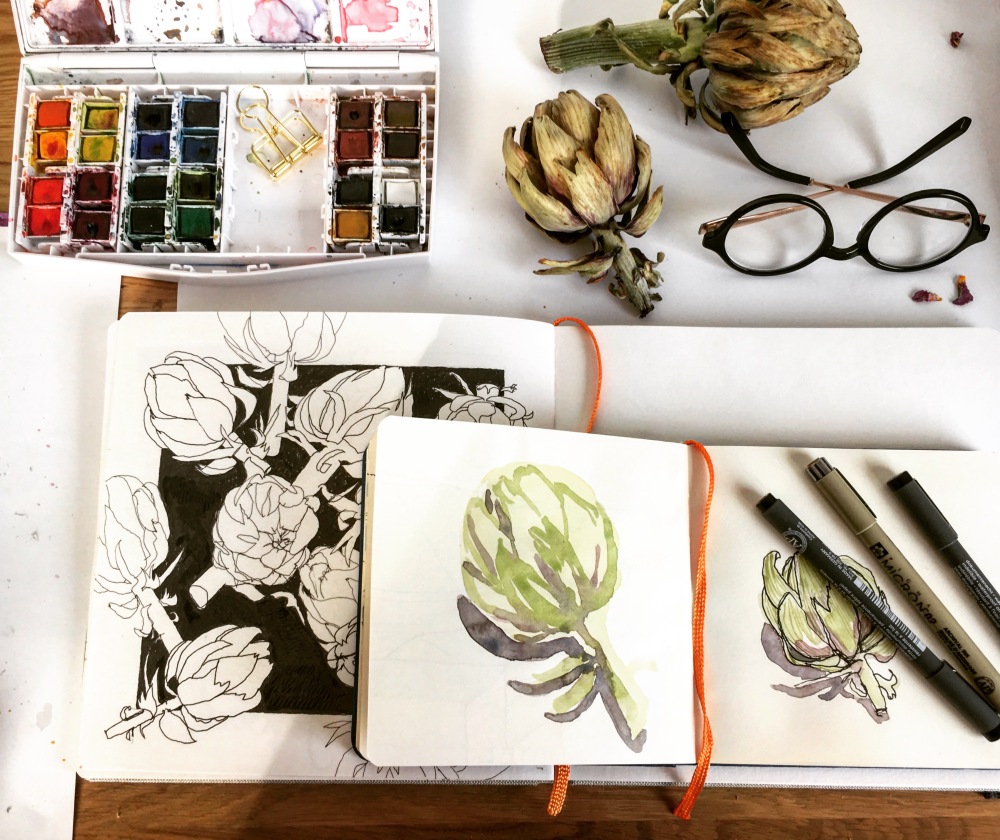Artichoke: That vegetable of which one has more at the finish than at the start of dinner.
~Lord Chesterfield
Artichokes are young, unopened thistle buds from the daisy family. If left to mature, the flowers can reach up to 5 feet in height. They are descendants of a similar thistle plant known as the cardoon, which can still be found thriving in the wild. Unlike cardoons, the artichoke is now exclusively cultivated for food. Its thick green petals, formally known as bracts or phyllaries, are topped with tiny thorns. The long stem has a fibrous, woody texture that resembles a young tree branch.

Alexander Adriaenssen (1587 – 1664) Still-Life with Artichokes in a Silver gilt wine cistern and other Silver Objects
Artichokes are good for you: they are full of fiber, with antioxidants, virtually fat free, a good source of vitamin C, magnesium, potassium, folate, and iron. And to top it all off, they are particularly supportive of liver health due to their cynarin content …

Ulisse Aldrovandi (1522-1605), Artischocke
So, obviously, there is no reason not to eat artichokes. But the best way to really see an artichoke, to get to know it’s intricate shape and form, is not necessarily to eat it – but to sketch it:

This last week I have mad a lot of artichoke sketches, and I’m not finished yet. Marvellous, isn’t it, that a thistle can keep one occupied for days on end.

Beautiful, inspiring work! Your graphic sense is spot on – those flying artichokes with the black square are wonderful. I love the photos, too – the sketches, watercolors, glasses, pens and the thing itself – the artichokes – tell the story. Marvelous.
Thank you for visiting & for wonderful inspirational feedback!
🙂
My pleasure, really.